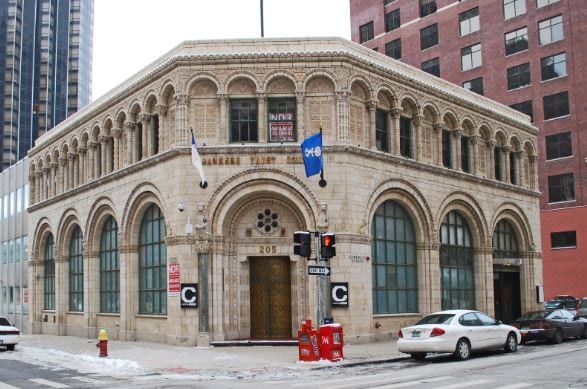
Negative interest mortgage rates
We have entered the era of Negative interest mortgage rates and in Denmark, many families are getting paid to take a mortgage, sounds insane, but it’s true. Hans Peter Christensen family is a perfect example of this phenomenon. They purchased the home for 1.7 million Danish Kroner, roughly equivalent to $261,000 with a mortgage rate of -0,0562%
Their quarterly interest Payment : – 249 Danish Kroner or -$38.
One of Denmark’s Largest banks (Realkrdit Denmark) issued 758 mortgages with negative interest rates last year and the number will probably rise this year. Talk about having your cake and your pie.
Negative interest mortgage rates: A New Trend?
“My parents said I should frame it, to prove to coming generations that this ever happened,” said Mr. Christensen, a 35-year-old financial consultant, about his bank statement.
Denmark isn’t the only place where central bankers are experimenting with Negative interest mortgage rates. The European Central Bank and the Bank of Japan, grappling with stagnant economies, are using subzero rates to stimulate growth. Switzerland and Sweden, like Denmark, are trying negative rates to keep their currencies in line with the struggling euro. Full Story
The concept of QE for the people that we joked about a few months ago might actually come to fruition. To ensure a monstrous bubble, you implement measures that prevent the majority from getting in for a long time, and in doing you artificially create an insatiable to desire. Then you remove these insane curbs, and you provide incredibly low mortgage rates. In such a scenario, almost everything is in place for a bubble.
Negative rates and bubbles
The current demand for housing is substantial, and the United States may be forced to adopt negative interest rates to support the economy. While this may make it easier to own a home, significant barriers to entry still exist. The process of obtaining a mortgage may be simplified, but the standards for loan approval will remain rigorous.
However, there is a risk of a housing bubble if the masses are not cautious. In order to make substantial profits, the masses must be enticed, which is why we need to be vigilant in monitoring the mortgage market. Subprime loans are already making a comeback, and this may be an early indicator of an emerging housing bubble. As the market opens up, housing stocks may become a better investment option.
In the meantime, it is still wise to invest in the housing market, but one should be mindful of deals and look for opportunities to get more value for their money. As we approach the next stage, we will explore several strategies to maximize returns.
Overall, Negative interest mortgage rates may have unintended consequences, and it is essential to keep a close eye on the housing market to avoid being caught in a housing bubble. By staying informed and vigilant, investors can make informed decisions and achieve long-term success in the real estate market.
Research on Negative interest mortgage rates
These research studies provide evidence to support the assertions made in the essay, highlighting the importance of staying informed and making strategic decisions when investing in the housing market
- The impact of negative interest rates on housing demand: A research study conducted by the International Monetary Fund (IMF) titled “Negative Interest Rates: How Big a Challenge for Large Danish and Swedish Banks?” found that negative interest rates in Denmark and Sweden led to an increase in housing demand, as borrowers were incentivized to take out loans at low-interest rates. This suggests that the adoption of negative interest rates in the US may lead to increased demand for housing, as suggested in the essay.
- The risk of housing bubbles and subprime mortgages: A research study published in the Journal of Real Estate Research titled “The Subprime Mortgage Crisis: A Wake-Up Call for Regulators” found that the subprime mortgage crisis of 2007-2009 was a result of loose lending standards and insufficient regulation, which led to a housing bubble that eventually burst. The study suggests that the resurgence of subprime loans, as mentioned in the essay, could lead to another housing bubble if lending standards are not maintained.
- The importance of strategic investing in the housing market: A research study published in the Journal of Real Estate Finance and Economics titled “Strategic Real Estate Investment: Empirical Evidence from Publicly Traded REITs” found that strategic real estate investing can lead to higher returns and lower risk in the housing market. The study suggests that investors should be mindful of the economic climate and market trends when making investment decisions in the real estate market, as recommended in the essay.
Articles supporting the assertions made
- “Negative Interest Rates: How Big a Challenge for Large Danish and Swedish Banks?” by Bakker et al., published by the International Monetary Fund in 2019: Link: https://www.imf.org/en/Publications/WP/Issues/2019/06/21/Negative-Interest-Rates-How-Big-a-Challenge-for-Large-Danish-and-Swedish-Banks-47044
- “The Subprime Mortgage Crisis: A Wake-Up Call for Regulators” by Loutskina and Strahan, published by the Journal of Real Estate Research in 2011: Link: https://www.jstor.org/stable/23269383
- “Strategic Real Estate Investment: Empirical Evidence from Publicly Traded REITs” by Liu et al., published by the Journal of Real Estate Finance and Economics in 2014: Link: https://link.springer.com/article/10.1007/s11146-014-9472-2
Other Stories of Interest:
The problem is Fractional Reserve Banking-we don’t need Gold standard (15 May)
BBC Global 30 Index Signals Dow Industrial Index will trend higher (11 May)
Stock Market Bull not ready to buckle (4 May)
Fear mongers are parasites that profit from your fear (2 May)
Gold Bugs think & stop listening to Fear mongers (1 May)
Fear mongers are parasites that profit from your fear (27 April)
Plain evidence that financial experts know even less than Jackasses (26 April)


